This post may contain affiliate links. Read our disclosure policy here.
Below you’ll also learn what to include inside the lunchbox so you can pack quick bento lunches for kids in the US that are fun to eat. No special tools or shapes required!
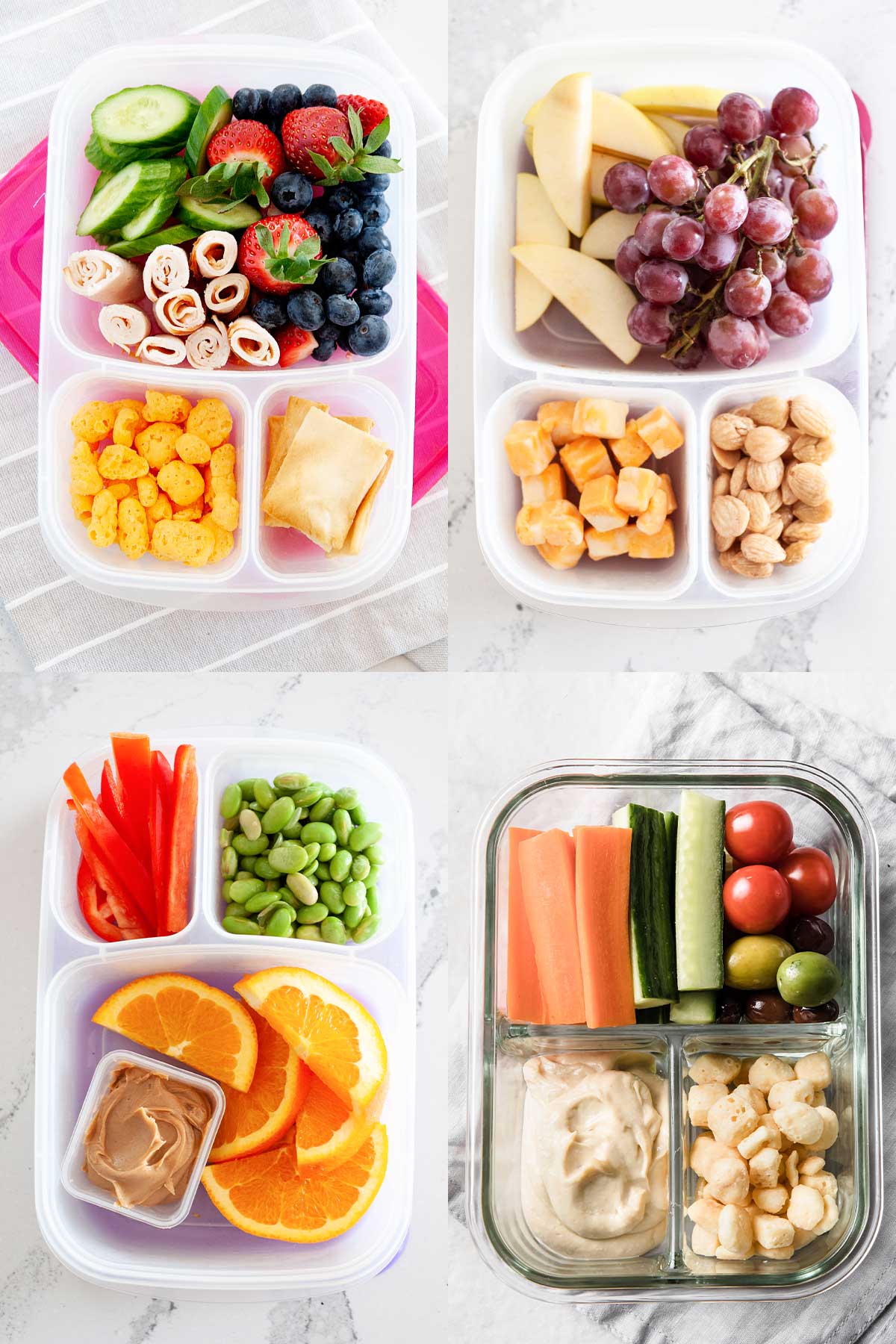
What is the Origin of the Bento Box
Traditionally, a bento box is a single-portion meal that includes a variety of ingredients, both hot or cold, inside the same box-shaped lidded container. The origin of the word comes from a Southern Chinese slang term that means “convenient” but it became wildly popular in Japanese lunches and cooking.
Bento Box vs. Lunch Box
Both bento boxes and lunch boxes are reusable containers designed to pack foods to-go. The main difference is that a bento box has multiple compartments in the same base and a single lid, providing the opportunity to pack multiple ingredients in the same container. A lunch box or lunch container is a single base and a lid, without multiple compartments. In recent years, the popularization of bento lunches in the US has led to this term being used interchangeably.
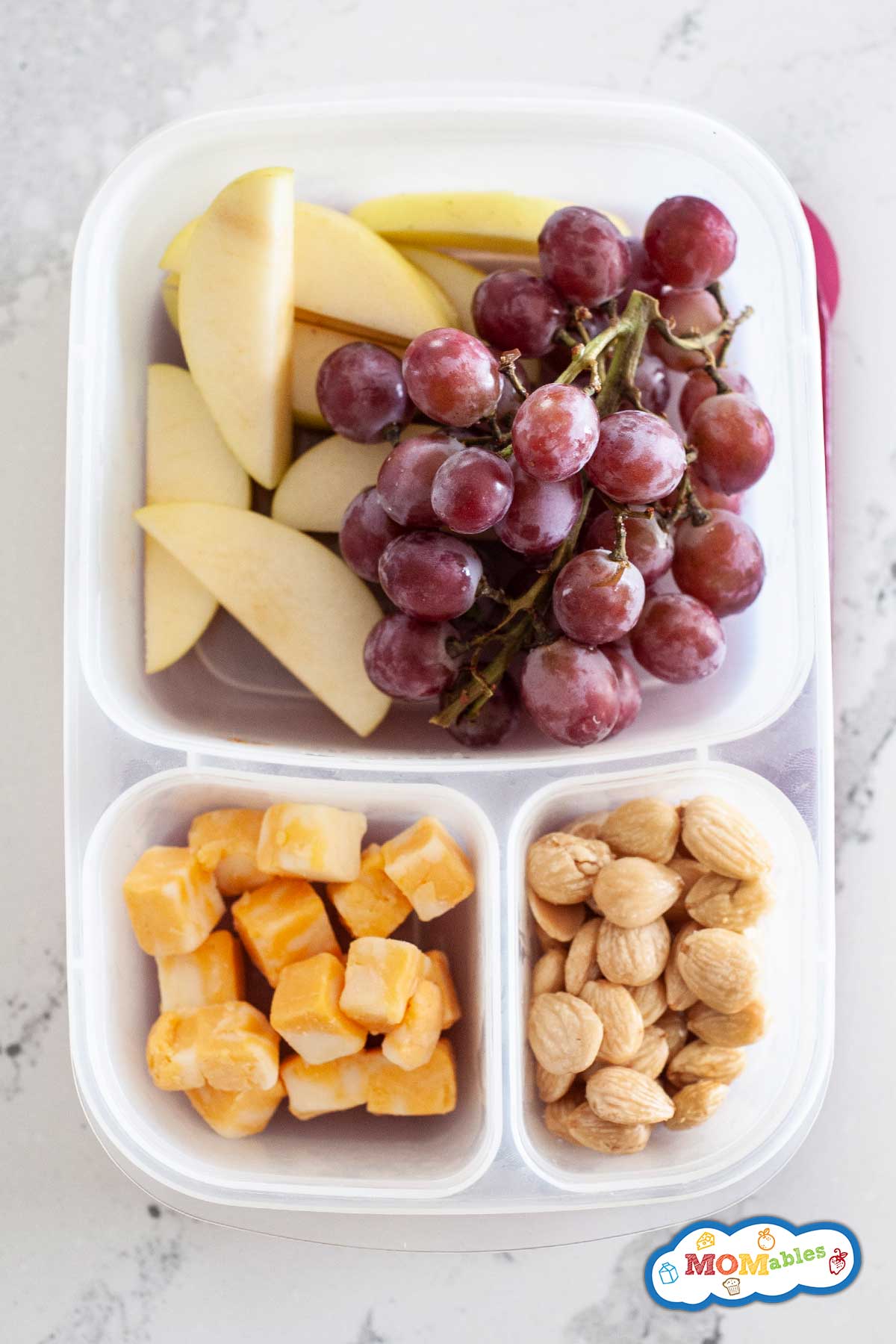
What Goes in a Bento Box?
The best part of a bento-style lunch is mixing and matching ingredients from different food groups, often without needing to cook anything!
While traditional Japanese bento lunches always have cooked rice, building a bento lunch in the USA is more about utilizing ingredients you have, and your child likes to make a nutritious lunch.
Cooking is not a requirement. Utilizing leftovers is the perfect way to build a bento!
Here are the main elements that go in a bento:
- Protein
This can be a hard-boiled egg, rolled-up deli meat, or leftover grilled proteins. Protein is an essential macronutrient that also helps keep kids full. It can stand alone or be an ingredient of a sandwich or wrap, for example. - Carbohydrates
Select a complex carbohydrate for lunch. This can be whole-grain bread to make a sandwich with the above protein, crackers, or leftover pasta. Carbohydrates are an essential source of energy, fiber, and help fill up hungry bellies. - Fruit
Wash, peel, and prep a serving of fruit. Apples, berries, grapes, oranges, pears, and pineapple pieces are always winners. Fruit is rich in vitamins and fiber and is perfect for a child’s lunch. Any fresh, frozen, or canned fruit can be packed! - Veggies
Wash, peel, and prep a serving of veggies. Bite-sized veggies like baby carrots, cauliflower pieces, broccoli florets, sliced bell peppers, cucumber slices, or sugar snap peas are great for dipping! Veggies add fiber, vitamins, and minerals to a lunch. They can be fresh, frozen and warmed, or canned. - Sauce or Dip
Dips such as homemade ranch, hummus, or sauces are a great addition to a bento-style lunchbox. They can add flavor and nutrition and are great vessel for kids to consume more veggies. Pack sauces and condiments in a small container like one of these. - Healthy Treat
Consider including a small treat in the lunchbox to keep kids looking forward to enjoying their bento-style lunches.
Watch this video, to see me break down the healthy bento lunch ingredients with more ideas!
How to Pack a Bento Box that Stays Fresh
While packing a bento lunch is a terrific way for kids to eat a variety of nutritious foods at school, there are a few important things to know about how to pack these ingredients inside the container to make sure the food stays fresh.
Since all the foods go in the same base container with multiple compartments, you’ll want to:
Separate wet and dry ingredients from each other.
Crackers, for example, should go in their own compartment so they don’t absorb moisture from other foods.
Place dips and sauces in small lidded containers.
This will prevent other items from getting soggy and minimize any potential mess. We use and love these dip containers.
Pack hot foods in a thermos.
Thermos lunches can also be part of a bento lunch but must be packed separately. For foods like hot meatballs, soup, pasta, and more, you’ll want to pack items that are hot or warm inside an insulated container to preserve the freshness of the non-hot items in the same container.
Bite-sized pieces for younger kids.
Younger kids tend to love lunch for socializing and chatting with their friends. Cutting up food items into smaller pieces, using a sandwich cutter or quartering sandwiches can help make sure kids take bites between their conversations.
Make portions appropriate.
Make sure you’re packing enough food to keep hunger at bay as well as not too much since it can lead to food waste or anxious feelings for not finishing their lunch. You can still pack the same lunch for kids of different ages by adjusting the portion size and amount of food included.

Should Bento Boxes be Hot or Cold?
Bento lunches can be hot or cold and a lot of it depends on the type of container you use. In the US, most bento-style lunches are cold since there is only one container that has both a hot and cold compartment under the same lid.
Hot lunches, on the other hand, are packed inside a thermos container to keep food hot until lunchtime since most kids in the US don’t have access to a microwave.
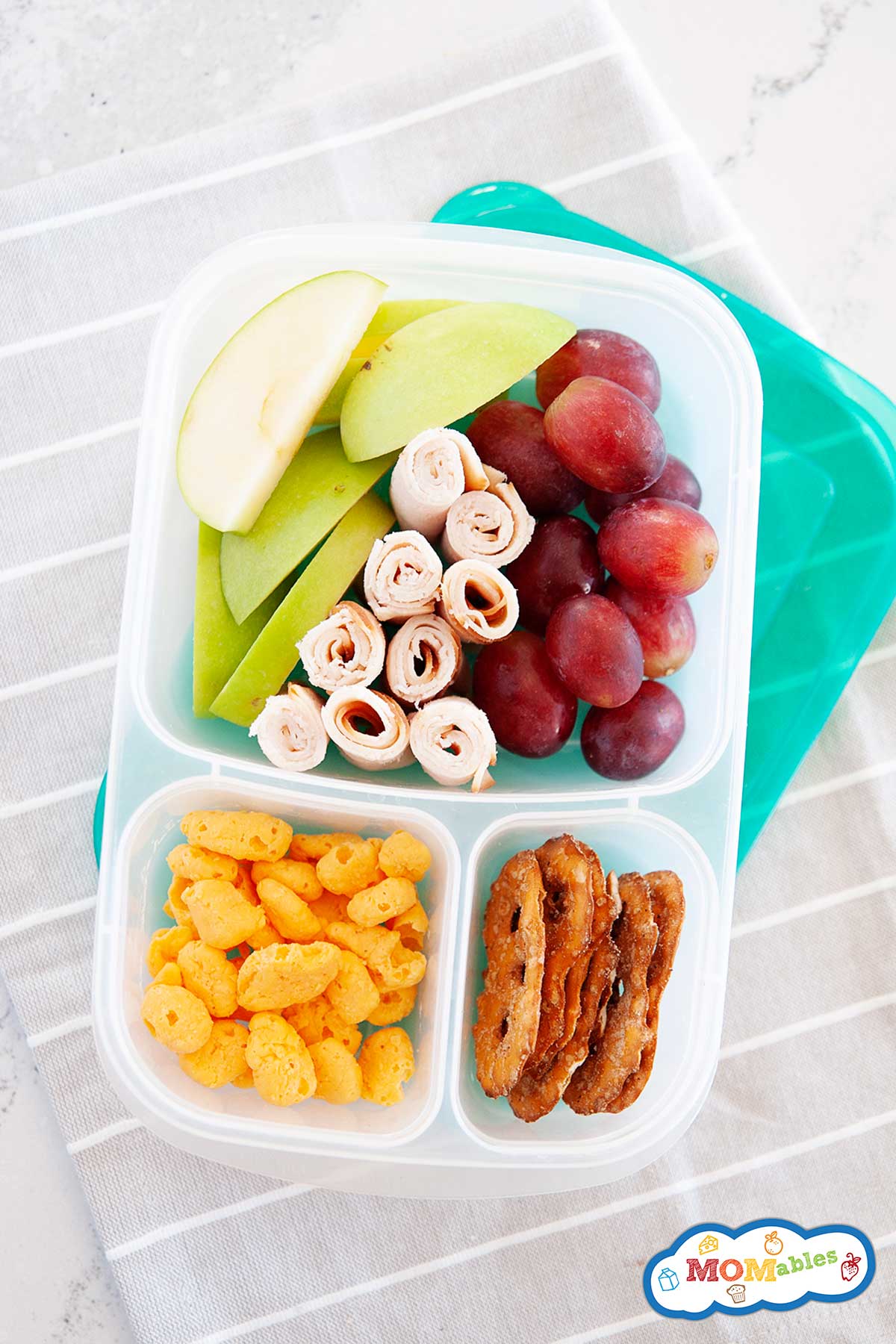
Can You Pack Bentos the Night Before?
Bento lunches can be packed the night before to save time in the morning. To keep items fresh, make sure any dry ingredients are in their own compartments so they don’t absorb moisture from the fridge or other ingredients. If making a sandwich, make sure it’s built in the right order.
Once built, close the lid on the bento-style lunch box and keep it in the fridge until the next morning; when you’ll transfer it from the refrigerator inside an insulated lunch bag to be carried to school.
Best Bento Box Containers
Bento boxes have come a long way in recent years and there are many options available for purchase. The best container for packing bentos for your child will depend on how much food you’ll need to pack inside, the age of the child, your budget, and the material you prefer (plastic or stainless steel).
I usually recommend owning a couple of different bento box containers so you can pack a variety of lunches: from wraps or pinwheels to snack boxes, sandwiches, and more.
Here are the ones we use, recommend, and are available in the US:
- Lunchbots: this stainless steel container resembles the classic bento-style box the most and is available in a variety of sizes and a number of compartments. Shop Lunchbots here.
- EasyLunchboxes: the first affordable multi-compartmentalized container available in the US continues to be one of the most popular options for packing bento lunches because you can pack lunches of all sizes for kids of all ages. Shop EasyLunchboxes here.
- Yumbox: the original leak-proof compartmentalized container that’s versatile and great for kids ages 10 and under. Shop Yumbox here.
- Rubbermaid Blox: while not a “bento” it’s perfect for building lunches with a variety of ingredients keeping everything separate. Also great for kids that have lunches and snacks at school. Shop Blox here.
- Omie Box: the first and only lunch container that provides a built-in thermos option for hot + cold lunches. Ideal for younger kids. Shop Omie Box here.
Bento Box Ideas
In the US, bento school lunches can include any food a child will eat. From bentos with sandwiches inside, wraps or pinwheels, to a variety of nutritious ingredients anything can be backed inside!
Here are a few bento box ideas to get you started:






Healthy Bento Box Lunches for US Kids
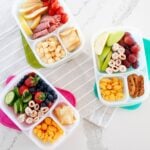
Ingredients
- 1 serving of protein
- 1 serving of carbohydrates
- 1 serving of fruit
- 1 serving of veggies
- 1 serving dip or sauce, optional
- 1 serving of a healthy treat, optional
Instructions
Build your bento with:
- Start with selecting a protein for your bento box. This can be a hard-boiled egg, rolled-up deli meat, or leftover grilled proteins. Protein is an essential macronutrient that also helps keep kids full. It can stand alone or be an ingredient of a sandwich or wrap, for example.
- Select a complex carbohydrate for lunch. This can be whole-grain bread to make a sandwich with the above protein, crackers, or leftover pasta. Carbohydrates are an essential source of energy, fiber, and help fill up hungry bellies.
- Wash, peel, and prep a serving of fruit. Fruit is rich in vitamins and fiber and is perfect for a child’s lunch.
- Wash, peel, and prep a serving of veggies. Bite-sized veggies or pieces that are crunchy and dippable are a kids’ favorite. Veggies add fiber, vitamins, and minerals to a lunch.
- Dips such as homemade ranch, hummus, or sauces are a great addition to a bento-style lunchbox. They can add flavor and nutrition and are a great vessel for consuming more veggies.
- Consider including a small treat in the lunchbox to keep kids looking forward to enjoying their bento-style lunches.
Keep everything fresh by:
- Separate wet and dry ingredients from each other. Crackers, for example, should go in their own compartment so they don’t absorb moisture from other foods.
- Place dips and sauces in small lidded containers. This will prevent other items from getting soggy and minimize any potential mess.
- Bite-sized pieces for younger kids. Younger kids tend to love lunch for socializing and chatting with their friends. Cutting up food items into smaller pieces or quartering sandwiches can help make sure kids take bites between their conversations.
- Make portions appropriate. Make sure you’re packing enough food to keep hunger at bay as well as not too much since it can lead to food waste or anxious feelings for not finishing their lunch.


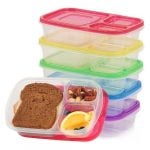

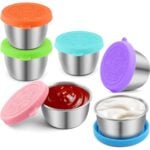

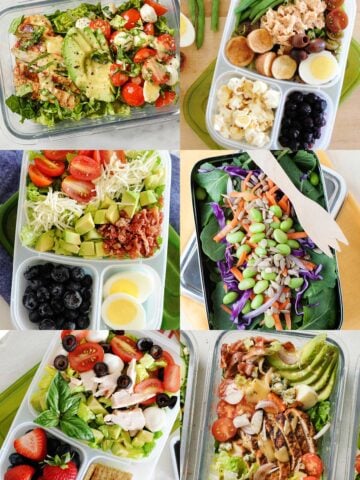



Dilys Anna says
this pizza turned our GREAT!